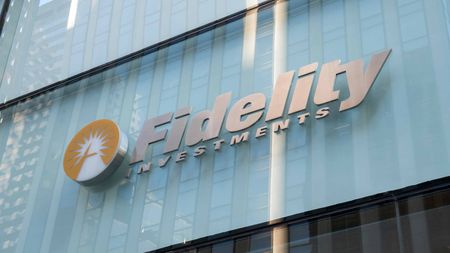Betting on Continued Growth in Asia
The manager of Wells Fargo Advantage Asia Pacific expects the markets in China and India to bounce back from a rotten year.
This has been a dreadful year for most stock markets in Asia. China and India, the two giants, have been two of the world's worst performers. Of course, that comes after several bull-market years.
But Anthony Cragg, manager of Wells Fargo Advantage Asia Pacific (symbol SASPX), likes what he sees. Speaking at the Morningstar Investment Conference, in Chicago, June 26, Cragg says the growth story in Asia is still largely intact. The problems of the U.S. and Great Britain (Cragg is British)-property collapse, mortgage meltdown, consumer indebtedness, economic stagnation-are largely absent in Asia. A year ago, he says, most investors viewed Asia as more risky and the U.S. as less risky. "The last year has destroyed that perception."
Asia, he says, is no flash in the pan, but rather increasingly the center of the world economy. "Next year, the pendulum will swing back to Asia from Brazil and Russia," predicts Cragg. "Asia is where the growth is."

Sign up for Kiplinger’s Free E-Newsletters
Profit and prosper with the best of expert advice on investing, taxes, retirement, personal finance and more - straight to your e-mail.
Profit and prosper with the best of expert advice - straight to your e-mail.
Cragg has run Advantage Asia Pacific for 15 years. Over the past five years through June 27, the fund returned an annualized 23%, an average of eight percentage points per year better than the MSCI All Country Asia Pacific index. His portfolio includes an eclectic mix of stocks of companies of all sizes and types.
Cragg is currently working on a few themes. One is that the Japanese market is undervalued and will play catch up. He's increased his Japan weighting in the portfolio from 6% to 19% this year, partly by buying stakes in big trading houses, such as Mitsui & Co., Mitsubishi and Marubeni.
Another theme is tapping into Asia's emerging prosperity and the growth of the middle class. He does this, for example, by investing in for-profit education. "Chinese and Indians are obsessed with education," he says. Raffles Education of Singapore is one holding.
Increasingly affluent Asians will pay for better drugs and health-care services, hospital operator stocks, such as Bumrungrad Hospital of Thailand and Parkway Holdings of Singapore.
The new middle-class lifestyle in Asia demands more companies that provide fund management and consumer banking -- which is why he holds Edelweiss Capital of India, a diversified financial-services company.
The largest risk in Asia now is inflation, says Cragg. Even so, he says, investors should feel comfortable allocating a good chunk of their long-term stock portfolio to Asia. But his suggestion of 20% to 25% is a bit aggressive for most Americans. This fund is available without a load but carries a fairly heavy annual expense ratio of 1.65%. The initial minimum investment required is $2,500.
Get Kiplinger Today newsletter — free
Profit and prosper with the best of Kiplinger's advice on investing, taxes, retirement, personal finance and much more. Delivered daily. Enter your email in the box and click Sign Me Up.
Andrew Tanzer is an editorial consultant and investment writer. After working as a journalist for 25 years at magazines that included Forbes and Kiplinger’s Personal Finance, he served as a senior research analyst and investment writer at a leading New York-based financial advisor. Andrew currently writes for several large hedge and mutual funds, private wealth advisors, and a major bank. He earned a BA in East Asian Studies from Wesleyan University, an MS in Journalism from the Columbia Graduate School of Journalism, and holds both CFA and CFP® designations.
-
 Stock Market Today: Stocks Are Mixed Before Liberation Day
Stock Market Today: Stocks Are Mixed Before Liberation DayMarkets look forward to what comes with the reordering of 80-year-old global trade relationships.
By David Dittman Published
-
 Stagflation: What It Is and Why Retirees Should Care
Stagflation: What It Is and Why Retirees Should CareStagflation — the economic bogeyman of the 1970's — may return to the US. Here's what it could mean to your retirement.
By Donna Fuscaldo Published
-
 White House Probes Tracking Tech That Monitors Workers’ Productivity: Kiplinger Economic Forecasts
White House Probes Tracking Tech That Monitors Workers’ Productivity: Kiplinger Economic ForecastsEconomic Forecasts White House probes tracking tech that monitors workers’ productivity: Kiplinger Economic Forecasts
By Matthew Housiaux Published
-
 The 5 Best Actively Managed Fidelity Funds to Buy Now
The 5 Best Actively Managed Fidelity Funds to Buy Nowmutual funds In a stock picker's market, it's sometimes best to leave the driving to the pros. These Fidelity funds provide investors solid active management at low costs.
By Kent Thune Last updated
-
 The 12 Best Bear Market ETFs to Buy Now
The 12 Best Bear Market ETFs to Buy NowETFs Investors who are fearful about the more uncertainty in the new year can find plenty of protection among these bear market ETFs.
By Kyle Woodley Published
-
 Investing in Emerging Markets Still Holds Promise
Investing in Emerging Markets Still Holds PromiseEmerging markets have been hit hard in recent years, but investors should consider their long runway for potential growth.
By James K. Glassman Published
-
 Don't Give Up on the Eurozone
Don't Give Up on the Eurozonemutual funds As Europe’s economy (and stock markets) wobble, Janus Henderson European Focus Fund (HFETX) keeps its footing with a focus on large Europe-based multinationals.
By Rivan V. Stinson Published
-
 Stocks: Winners and Losers from the Strong Dollar
Stocks: Winners and Losers from the Strong DollarForeign Stocks & Emerging Markets The greenback’s rise may hurt companies with a global footprint, but benefit those that depend on imports.
By Anne Kates Smith Published
-
 Vanguard Global ESG Select Stock Profits from ESG Leaders
Vanguard Global ESG Select Stock Profits from ESG Leadersmutual funds Vanguard Global ESG Select Stock (VEIGX) favors firms with high standards for their businesses.
By Rivan V. Stinson Published
-
 Kip ETF 20: What's In, What's Out and Why
Kip ETF 20: What's In, What's Out and WhyKip ETF 20 The broad market has taken a major hit so far in 2022, sparking some tactical changes to Kiplinger's lineup of the best low-cost ETFs.
By Nellie S. Huang Published